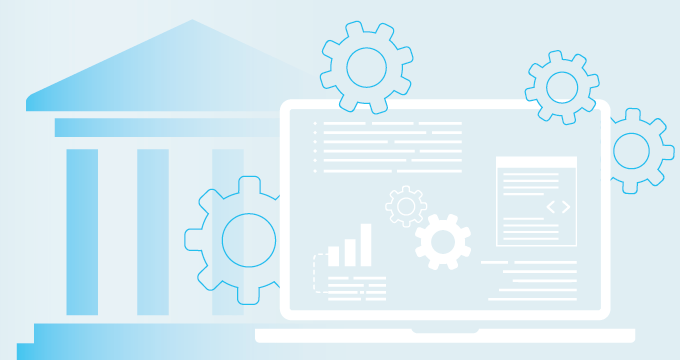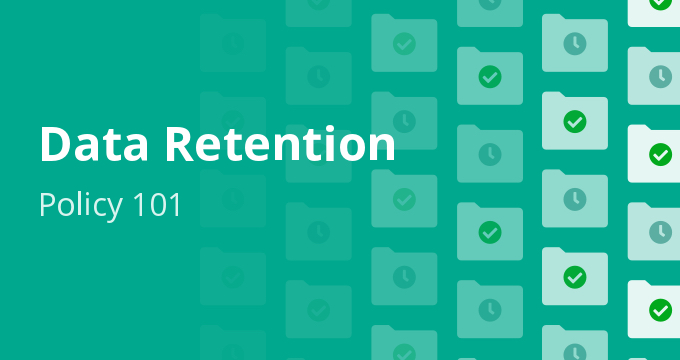Did you know that according to stats, around 2.5 quintillion bytes worth of data are generated each day?
That’s a staggering amount, and it only keeps on growing exponentially. Due to such a data explosion, businesses and organizations are constantly grappling with the challenges of managing, storing, and protecting their valuable data assets. From financial transactions to customer records, this data is critical to daily operations and long-term decision-making.
One crucial strategy that has emerged as a cornerstone of modern data management is data replication.
In this article, we’ll explain the following:
- What is data replication
- Why it is so essential for businesses
- What types of data replication are there
- How this process can help you protect your data and stay compliant
What Is Data Replication?
Data replication is the process of copying and maintaining data in multiple locations to ensure its availability, reliability, and consistency across systems.
Simply put, it involves creating duplicates of a dataset and storing them in different physical or virtual environments. These copies are kept in sync to ensure that any changes made to one dataset are reflected in its replicas. Data replication can occur in real time or at scheduled intervals, depending on an organization’s needs and the replication method used.
For example, in a disaster recovery setup, if a primary server fails due to a hardware issue, the system can seamlessly switch to a replica server to minimize downtime and prevent data loss.
Similarly, thanks to data replication, businesses can scale their operations by distributing copies of data to different locations, thus allowing for faster access and load balancing across servers.
Why Is Data Replication Important?
Data replication offers numerous benefits to modern businesses. Some of the key reasons why organizations implement data replication include:
High availability
One of the most critical advantages of data replication is ensuring that data is always accessible. If one server or system goes offline due to hardware failure, power outage, or network issues, replicated copies of the data allow operations to continue seamlessly without downtime. This level of availability is essential for organizations that cannot afford service interruptions, such as those in high-risk industries such as government, healthcare, or finance.
Disaster recovery
In the event of disasters like cyberattacks, power failures, or natural events, data replication allows for faster recovery.
By maintaining real-time or near real-time copies of data across multiple geographic locations, organizations can quickly restore operations by switching to a remote replica. This allows organizations to swiftly restore operations and minimize data loss and downtime. As a result, businesses can achieve greater system robustness and operational reliability during unforeseen events.
Additionally, by distributing copies of data across various servers, replication balances the load and leads to improved response times and optimized system performance, particularly in globally distributed environments.
Data consistency across systems and locations is paramount. It’s crucial for accurate reporting, regulatory compliance, and informed decision-making. This makes data replication an absolute must for organizations that prioritize data integrity.
Enhanced scalability
Data replication can be a crucial part of an organization’s scaling strategy.
As businesses grow and traffic increases, replicated data can be distributed across multiple nodes, allowing systems to handle higher workloads.
By distributing data across different servers, businesses can add processing power as needed to optimize server performance and allow the infrastructure to scale efficiently.
Improved fault tolerance
Fault tolerance is enhanced with data replication due to redundancy.
If one copy of the data becomes corrupted or unavailable, the system can automatically rely on another replica to continue functioning. This redundancy helps protect against data loss and makes sure that business operations can proceed without interruption, even during partial system failures.
Types of Data Replication
Data replication can be implemented in various ways depending on an organization’s specific needs. Let’s explore the most common types:
1. Synchronous replication
In synchronous replication, data is copied from one location to another in real time. When a change is made to the primary dataset, it is immediately reflected in the replicated dataset. This way, both locations have identical copies of the data at any given moment.
The advantage of synchronous replication is that it guarantees data consistency. However, because the primary system must wait for confirmation that the data has been copied successfully before proceeding with new transactions, this method can lead to latency, especially in geographically distant locations.
This type of replication is ideal for applications where data consistency is critical, such as financial transactions, banking, or real-time monitoring systems.
2. Asynchronous replication
Asynchronous replication allows the primary system to continue processing transactions without waiting for the replicated system to confirm the data copy. Instead, data is transferred to the replica location at intervals, often after the primary transaction has been completed.
This results in a slight time lag between when data is updated on the primary system and when it appears on the replica.
Although asynchronous replication may not provide real-time data consistency, it offers better performance and lower network overhead. As a result, it’s a good option for businesses that prioritize speed over immediate synchronization.
Asynchronous replication is commonly used in disaster recovery scenarios, where it’s more important to have an up-to-date copy of data rather than perfect real-time synchronization.
3. Full replication
In full replication, every single piece of data in the primary system is copied to the replica system. This means that all changes — both small updates and large-scale data additions — are mirrored in the replica.
Full replication provides the highest level of redundancy but requires significant storage space and bandwidth to maintain.
This method is suited for organizations that cannot afford any data loss and need exact duplicates of their data across multiple locations, such as healthcare organizations adhering to HIPAA regulations.
4. Partial replication
Unlike full replication, partial replication involves copying only selected datasets or specific data types. This method is more resource-efficient since only the most critical data is duplicated, reducing storage and bandwidth requirements.
Partial replication is often used in environments where certain types of data, such as customer records or financial data, must be replicated, while other non-essential data can remain localized.
5. Transactional replication
In transactional replication, individual database transactions — such as inserts, updates, or deletions — are continuously tracked and replicated in real time or near real time to the target system. Each transaction is sent and applied to the replica in the order it was performed on the primary system.
This type of replication maintains data integrity by replicating each transaction in real time, ensuring that the target system reflects the exact changes made on the source system.
However, it’s complex to set up and manage, as the replication must track every change at a granular level.
6. Snapshot replication
With snapshot replication, a full snapshot of the data is taken at a specific point in time and replicated to the target system. However, unlike other methods, updates to the data aren’t continuously replicated. Instead, new snapshots are taken at scheduled intervals, and the entire dataset is replicated again.
This type of replication is useful for datasets that don’t change frequently because it’s simpler to implement and manage since it doesn’t require tracking individual changes.
On the other hand, snapshot replication doesn’t provide real-time synchronization, meaning any changes made after a snapshot are only reflected once the next snapshot is taken. It can also be resource-heavy when replicating large datasets.
7. Merge replication
Merge replication is a more complex form of data replication that allows both the source and target systems to make updates independently.
Changes made at each location are tracked, and during the replication process, those updates are merged to ensure synchronization between the systems.
In cases where the same data has been modified on both systems, conflict resolution rules are applied to determine which version of the data will take precedence, ensuring consistency without data loss.
The key advantage of merge replication is its ability to enable bi-directional updates. This allows both systems to operate independently while still being able to synchronize later.
It’s particularly well-suited for distributed environments, such as mobile systems or remote field operations, where users at different locations need to work with their own local datasets and later sync their changes once reconnected to the network.
What Are the Differences Between Data Replication and Data Backup?
While both data replication and data backup aim to protect and preserve data, they serve different purposes and operate differently.
Data replication focuses on real-time availability by continuously copying and synchronizing live data across multiple systems or locations. It ensures that if one system fails, another replica can immediately take over so that downtime is minimized as much as possible.
Data backup, on the other hand, is about periodically copying data and storing it in a secure, often offline, location. It’s primarily used for disaster recovery, allowing data to be restored from a specific point in time after an incident, such as system corruption or cyberattacks.
Simply put, replication is for instant access and failover, while backup is for long-term data recovery. Both are essential for comprehensive data protection strategies.
Data Replication and Data Archiving
Data replication and data archiving are complementary strategies in an organization’s data management framework, but they serve different purposes.
While data replication focuses on real-time availability and consistency by maintaining live copies of data across multiple systems, data archiving is about long-term storage of inactive or historical data for compliance, legal, or operational reasons.
Businesses can leverage both to enhance data security and accessibility:
- Replication ensures that current, operational data is always accessible, even in case of system failures.
- Archiving preserves older or less frequently accessed data in a secure, retrievable manner to ensure compliance with regulations like HIPAA or SOX. This means that you’ll be able to produce data quickly in case of an audit or an ediscovery request and stay compliant with data retention requirements.
Together, these two processes form a comprehensive data management strategy where replication supports immediate data access and disaster recovery while archiving ensures historical data is preserved for long-term use without burdening active systems.
Key Benefits of Data Replication for Compliance and Security
For organizations in regulated industries — such as healthcare, finance, or government — data replication plays a key role in meeting compliance standards and securing sensitive information.
We’ve already mentioned regulations, such as HIPAA and SOX, which require organizations to ensure data availability and integrity. Replicating data enables organizations to meet these legal requirements by safeguarding against data loss.
Data replication helps protect sensitive information by storing copies in different locations, reducing the risk of a single point of failure or a targeted cyberattack.
Summary of the Main Points
- Data replication involves creating and maintaining multiple copies of data in various locations to ensure its availability, reliability, and resilience across an organization.
- It can be synchronous and asynchronous, while other types of replication include full, partial, transactional, partial, and merge.
- Data replication enhances scalability, disaster recovery, and system performance by distributing data across multiple servers or geographic locations. It plays a crucial role in minimizing downtime and ensuring business continuity, particularly in industries like finance, healthcare, and government.
- Data replication focuses on ensuring business continuity and real-time data availability by maintaining live copies across multiple locations, while data backup is designed for long-term recovery, storing periodic snapshots in secure locations. Data archiving preserves inactive or historical data for compliance and legal purposes, ensuring accessibility without burdening active systems.
Jatheon’s cloud email archiving solution can help you easily capture data automatically, find important information, and manage your data.
FAQ
1. What is data replication in simple terms?
Data replication is the process of copying data from one system or location to another to ensure its availability and consistency across environments.
2. Why is data replication important for businesses?
Data replication is crucial for disaster recovery, high availability, improved performance, and maintaining data consistency across multiple systems or locations.
3. What’s the difference between synchronous and asynchronous replication?
Synchronous replication involves copying data in real time, ensuring perfect consistency between systems. Asynchronous replication allows for a time lag, prioritizing performance over immediate data consistency.
4. Which industries benefit the most from data replication?
Industries like healthcare, finance, and government benefit the most, as they rely heavily on data availability, consistency, and regulatory compliance.
5. Can data replication impact system performance?
Yes, certain replication methods, such as synchronous replication, can introduce latency due to the need to confirm data replication in real time. However, asynchronous replication and partial replication can minimize performance impacts.
Read Next:Effective Email Retention Policy Best Practices for Staying Compliant |











